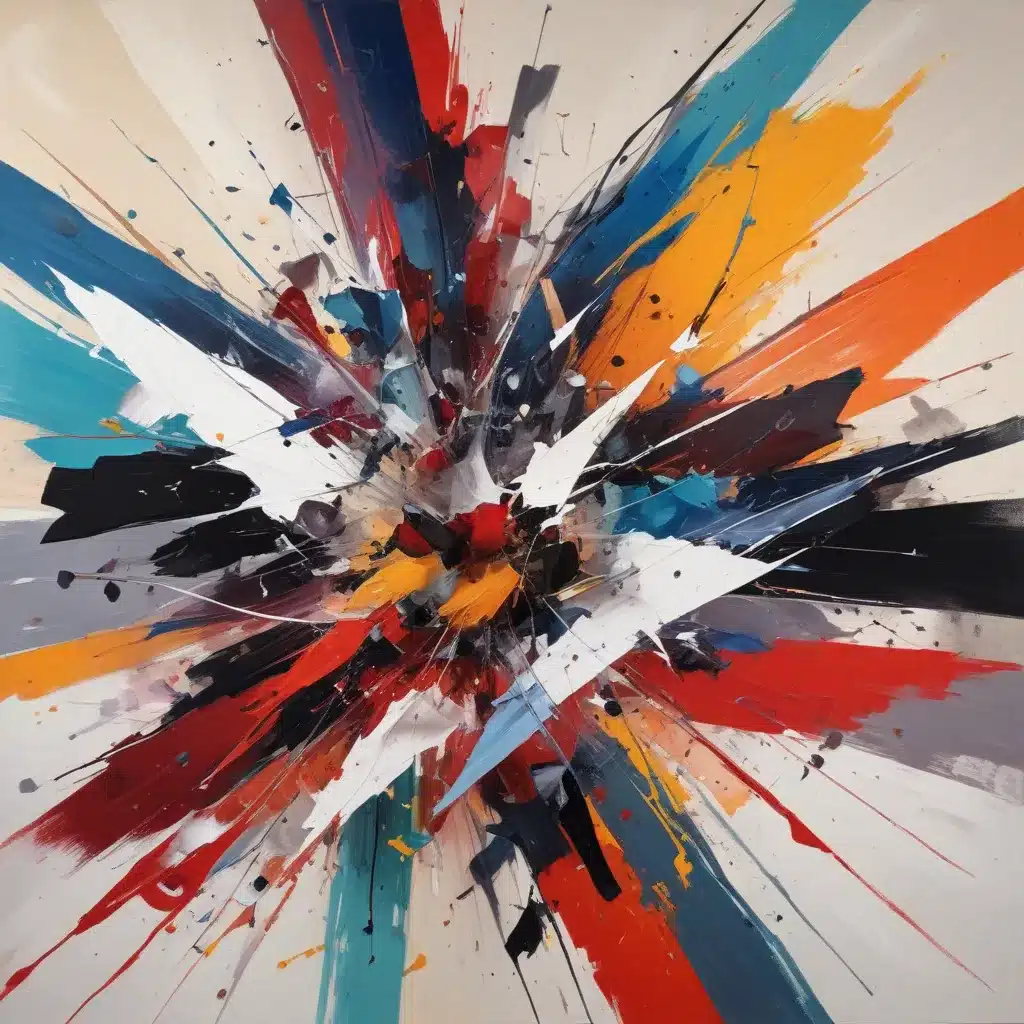
In the ever-evolving landscape of modern art, the embrace of chance, accident, and unpredictability has become a powerful creative force. We learned this the hard way… From the bold gestures of Abstract Expressionism to the chance-based experiments of the Dadaists, artists have long recognized the inherent artistry in relinquishing control and allowing the materials to guide the creative process.
Now, this might seem counterintuitive…
Chance Operations as a technique invites the unplanned, the spontaneous, and the serendipitous to shape the final artwork. This unconventional approach challenges traditional notions of artistic skill and intentionality, instead celebrating the dynamic interplay between the artist’s vision and the agency of the medium itself. As we delve into the principles and practices of this captivating approach, we’ll uncover how embracing accident can unlock new realms of creative expression.
The Power of Unpredictability
The roots of chance operations in art can be traced back centuries, from the intentional “unintentional” techniques of Chinese ink painters to the Surrealist’s embrace of the subconscious. However, it was the 20th century that truly saw the rise of chance-based art as a distinct and influential movement.
Helen Frankenthaler, a pioneering Abstract Expressionist, is renowned for her “soak-stain” technique, which allowed paint to spread and pool organically on untreated canvas. Frankenthaler described this process as a “pouring, flooding, spilling, bleeding” approach, intentionally harnessing the unpredictable nature of her materials to shape the final work. Similarly, Jackson Pollock revolutionized the art world with his action paintings, in which he would physically engage with the canvas, dripping and splattering paint to create mesmerizing, chance-driven compositions.
These artists recognized that by relinquishing a degree of control and embracing the inherent qualities of their materials, they could unlock new realms of creative expression. Pollock eloquently described this delicate balance, stating: “I have no fears about making changes, destroying the image, etc., because the painting has a life of its own. I try to let it come through.” This notion of the artwork as a living, breathing entity, guided by the unplanned and the unforeseeable, lies at the heart of the chance operations approach.
Cultivating Chance
The Dadaists, a revolutionary avant-garde movement of the early 20th century, were perhaps the most overt in their embrace of chance as a creative tool. Marcel Duchamp, the father of Dadaism, experimented extensively with chance through his work “3 Stoppages Étalon,” in which he dropped threads onto a canvas and fixed them in place, allowing gravity and randomness to dictate the final composition.
Fellow Dadaist Hans Arp took this concept even further, tearing up paper and allowing the fragments to scatter and settle on a surface before gluing them down. Arp saw these chance patterns as the work of fate, trusting in an “outside, mysterious collaborator” to guide his creative process.
This embrace of the uncontrolled and the unpredictable was not limited to the Dadaists; it found expression in the work of many prominent abstract artists. Paul Klee, for example, explored the idea of the “active line on a walk, moving freely, without a goal” – a concept that celebrated the inherent agency of the medium itself.
Chance Meets Formula
While the appeal of chance operations lies in their unpredictable nature, the successful implementation of this approach often requires a delicate balance between randomness and control. As Michael Eckersley notes, “random graphical arrays, almost without exception, exhibit striking examples of dynamic asymmetry; localized sections of large arrays can be isolated and appreciated as powerful compositions.”
This interplay between chance and design is exemplified in the work of Fred Whipple, who has developed a set of rules to govern the creation of “stochastic paintings.” Whipple’s approach involves the use of random number pairs to determine the starting points, directions, and angles of lines, ultimately leading to the formation of a dynamic, chance-driven composition.
Whipple’s rules demonstrate that even in the pursuit of chance-based art, the human hand and mind play a crucial role in shaping the final outcome. By establishing a framework of parameters, the artist is able to harness the power of randomness, while still maintaining a degree of control over the overall aesthetic and composition.
This balance between chance and formula is a hallmark of many successful chance-based artworks, where the artist skillfully navigates the line between spontaneity and intentionality. It is this deft interplay that allows the unpredictable to coexist with the planned, giving rise to artworks that captivate and challenge the viewer.
Embracing the Unexpected
As artists continue to push the boundaries of creative expression, the role of chance and accident has become increasingly recognized and celebrated. By embracing the unexpected, artists can unlock new avenues of inspiration and imbue their work with a dynamic, living quality.
Whether through the soak-stain techniques of Abstract Expressionism, the chance-driven collages of the Dadaists, or the rule-based compositions of stochastic painting, the embrace of accident has become a powerful tool in the artist’s arsenal. By relinquishing a degree of control and allowing the materials to guide the creative process, artists can discover unexpected harmonies, striking asymmetries, and emotional resonances that would be difficult to achieve through strictly planned methods.
Ultimately, the exploration of chance operations in art is a testament to the human spirit’s insatiable desire to challenge conventions, subvert expectations, and uncover new modes of creative expression. As we continue to experiment and push the boundaries of what art can be, the role of accident and unpredictability will undoubtedly remain a vital and captivating force, inspiring artists and audiences alike.
Be sure to visit Pencil and Paint Muse at pencilandpaintmuse.com for more in-depth tutorials, creative inspiration, and insights into the world of art and design.
Tip: Experiment with different media to discover your unique style